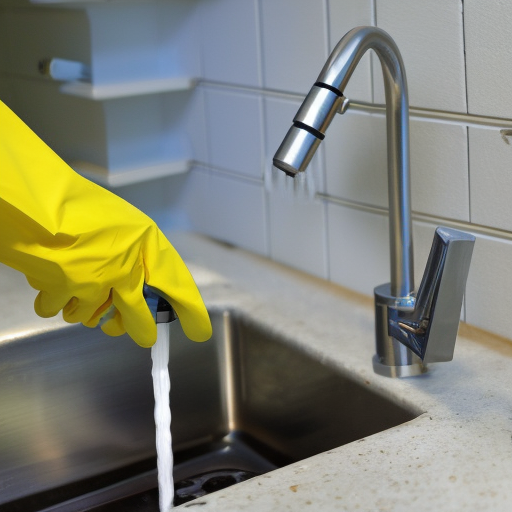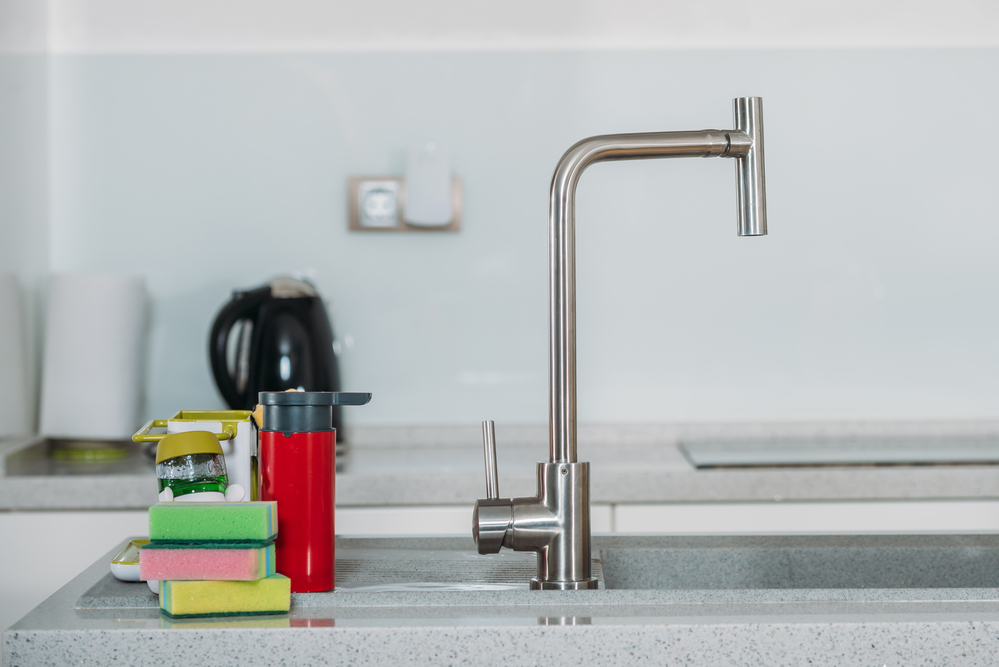Last Updated on January 26, 2023
Cleaning a boiling water tap isn’t just about keeping your kitchen looking spick and span. It’s also an important way to ensure that the hot water you use is free of impurities and bacteria. But how do you clean it? In this blog post, we’ll explain how to clean a boiling water tap, explore the benefits of doing so, as well as provide some troubleshooting tips for when things don’t go according to plan! So if you want cleaner-tasting drinks from your home taps or need advice on descaling them – read on!
Table of Contents:
Cleaning the Tap
To get started, you’ll need some basic cleaning supplies like vinegar, baking soda, and a soft cloth or sponge.
Start by unplugging the tap from the power source and turning off the water supply. Then remove any parts that can be taken apart, such as filters or aerators. Soak these parts in warm soapy water for about 10 minutes before scrubbing them with a soft brush to remove any built-up dirt or debris. Rinse them thoroughly afterwards and set aside to dry completely before reassembling your tap again.
Once all removable parts are clean, it’s time to tackle the main body of your boiling water tap itself. Start by wiping down the exterior with a damp cloth or sponge using a mild soap if necessary – don’t use abrasive cleaners on this surface. Next, mix equal parts white vinegar and baking soda together into a paste, then spread it over any areas where limescale has built up on your boiling water tap – this will help break down tough deposits without damaging the finish of your appliance. Leave for around 15 minutes, then wipe away with another damp cloth before rinsing off thoroughly with fresh running water until all traces of cleaning products have been removed from their surface area completely.

Finally, give everything one last rinse under hot running water, then leave to air dry naturally before plugging back in and testing out your newly cleaned boiling water tap. With regular maintenance like this, you should find that it continues performing at its best for many years to come – just remember not to use harsh chemicals when cleaning, as they could damage both its internal components and external surfaces alike.
Cleaning your boiling water tap is an essential step in ensuring it continues to work properly and efficiently, so be sure to do it regularly. Now let’s look at the benefits of cleaning your tap for yourself and your home.
Benefits of Cleaning
Cleaning your boiling water tap is essential for keeping it in good condition and ensuring that you get the best performance from it. Regular cleaning helps to prevent limescale build-up, which can cause blockages and reduce the efficiency of your tap. It also prevents damage caused by hard water deposits, which can corrode parts of the tap over time.
It’s important to clean your boiling water tap at least once a month or more frequently if you live in an area with particularly hard water. You should start by removing any lime scale or other debris from around the spout using a soft cloth dampened with warm soapy water. Then use a descaling solution specifically designed for taps (or white vinegar) to remove any limescale inside the spout itself – this will help keep it free flowing and working efficiently.

You should also take care when cleaning around the filter screen on top of the boiling chamber as these are delicate components that need careful handling; never scrub them directly as this could damage them permanently. Instead, gently wipe away any dirt or debris with a soft cloth dampened with warm soapy water before rinsing thoroughly afterwards with cold, running water until all traces of soap have been removed.
Cleaning your boiling water tap regularly not only keeps it looking good but also helps to ensure that it works properly and efficiently. Now let’s look at some troubleshooting tips for any issues you may encounter.
Troubleshooting
When it comes to cleaning a boiling water tap, there are some common problems that can occur. Clogged filters and blocked nozzles are two of the most frequent issues.
Clogged Filters: If your filter is clogged, it will prevent the flow of hot water from coming out of the tap. To fix this issue, you’ll need to replace or clean the filter, depending on its type. For example, if you have a mesh-style filter, then you should be able to simply rinse it off with warm soapy water before replacing it back into your boiling water tap. However, if your filter is made from carbon, then you may need to buy a new one as it cannot be cleaned effectively due to its porous nature.
Blocked nozzles can also cause problems when trying to get hot water out of your boiling water tap. This is usually caused by limescale build up in the nozzle, which prevents hot water from flowing through properly. To resolve this issue, use an old toothbrush and a 50/50 mix of white vinegar and cold running water solution and scrub away at any limescale deposits until they’re gone before rinsing off with cold running water afterwards. You should also make sure that all other parts of the nozzle, such as O-rings and seals, are free from debris too, for optimal performance
Conclusion
Taking the time to descale and maintain it will ensure that you get the most out of your appliance for years to come. With these tips, you should now have all the information needed to clean a boiling water tap with ease. So don’t wait any longer – get cleaning!
Paul is the type of person who never met a problem he couldn’t fix. He can always be found tinkering with something in his house, even if it isn’t broken! His tips and tricks are often shared on our site. He’s the one you call when something breaks because he has been known to improvise fixes for everything from leaky faucets to malfunctioning dryers.

